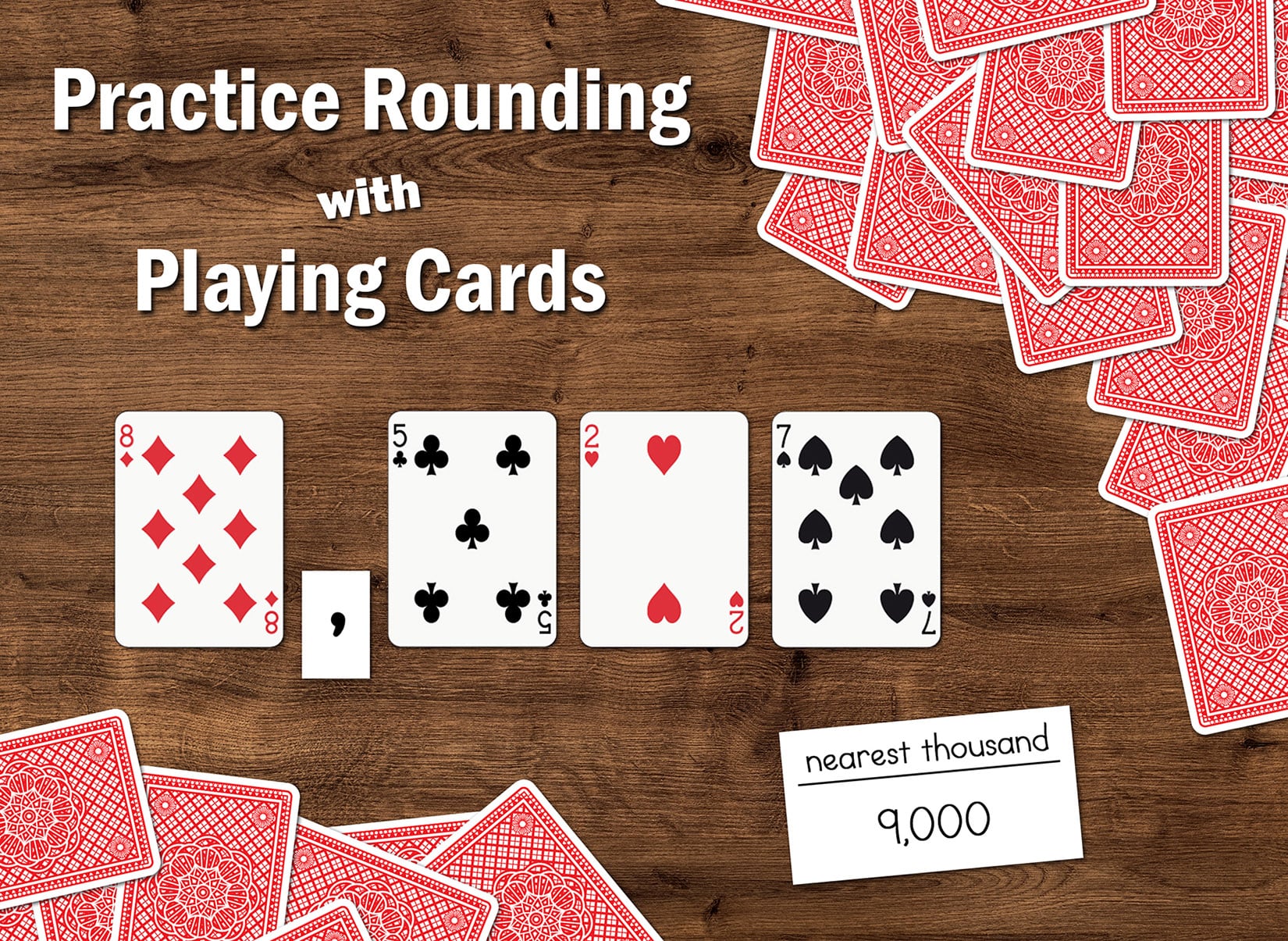
Put your students' rounding skills to the test with an easy and fun rounding game you can play with a deck of cards! Your students will practice rounding to the nearest ten, hundred, and thousand, and the nearest tenth, hundredth, and thousandth with this interactive math activity. Grab a pack of playing cards and get ready to practice rounding! Read on to find out more.

Playing cards are a great way to practice a variety of math skills, including rounding. A deck of playing cards can help students visualize place value concepts and digit values so they can learn how to round numbers with confidence. Use a deck of cards as a classroom learning center, small group activity, partner game, or individual quiet activity.
Here's how to practice rounding with playing cards:
Remove all jokers and aces from a deck of playing cards.
Shuffle the playing cards as needed.
Decide whether your students will practice rounding to the nearest ten, hundred, or thousand, or tenth, hundredth, or thousandth. If your students will be rounding decimals, use a sticky note or a piece of paper to draw an oversized decimal to use with the playing cards.
Also decide how many playing cards students will draw from the deck. Students will begin the activity by drawing that number of playing cards from the deck.
Students will lay out the cards face up in the order they drew from the deck. For example, if a student draws 4-3-3, he or she will lay down the cards to make the number 433.
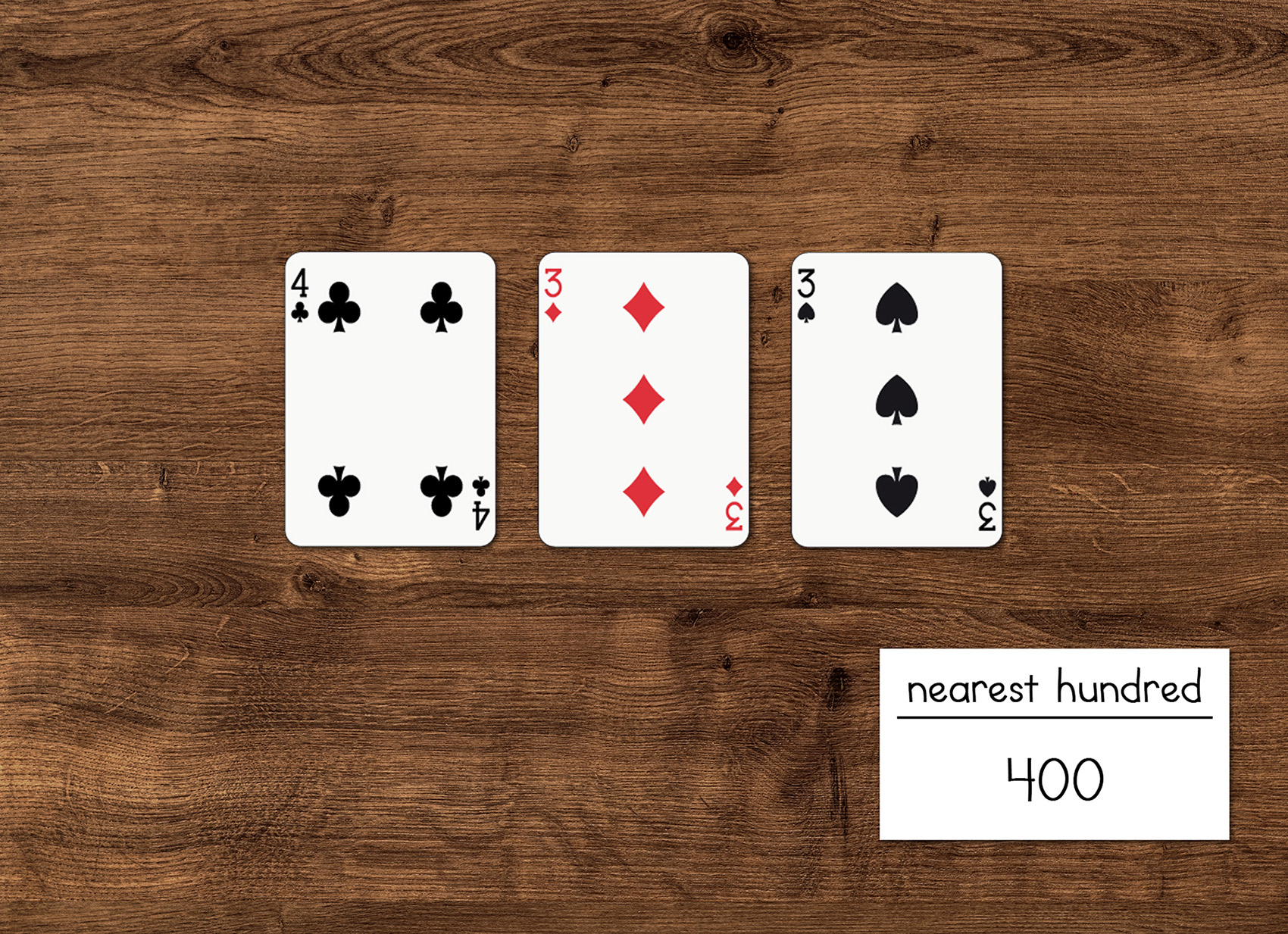
Students will round the number they formed to the nearest ten, hundred, or thousand, or tenth, hundredth, or thousandth.
Teacher tip: if students are rounding decimals, be sure they line up the playing cards they drew from the deck behind the decimal point.
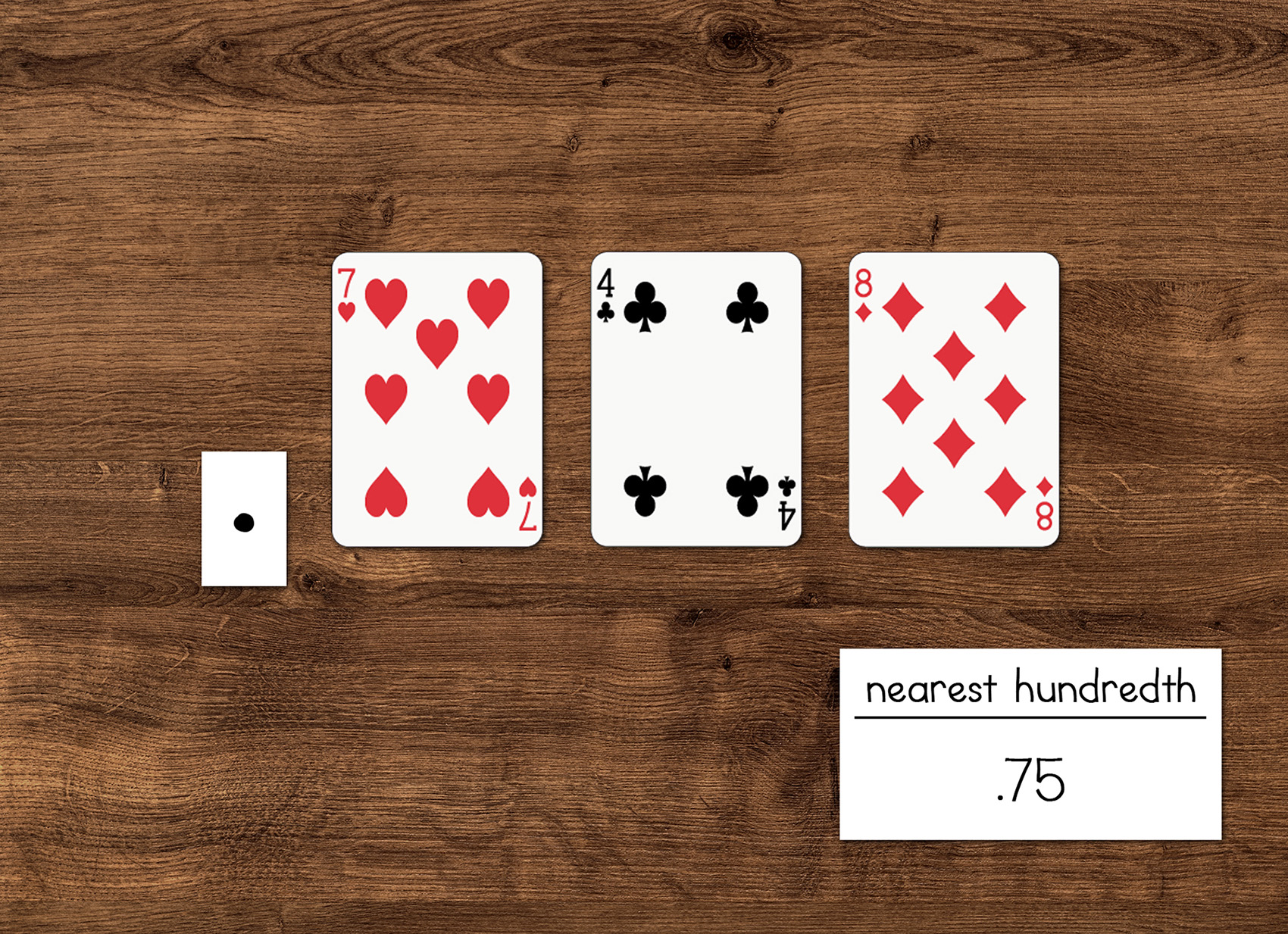
As students round each number, they may write or say their response aloud so you can determine whether they have rounded correctly.
Students will remove the current batch of playing cards to the bottom of the deck or a separate discard pile and continue to draw digits, form them into numbers, and round the resulting numbers. You can have them do this for as may rounds as you'd like.
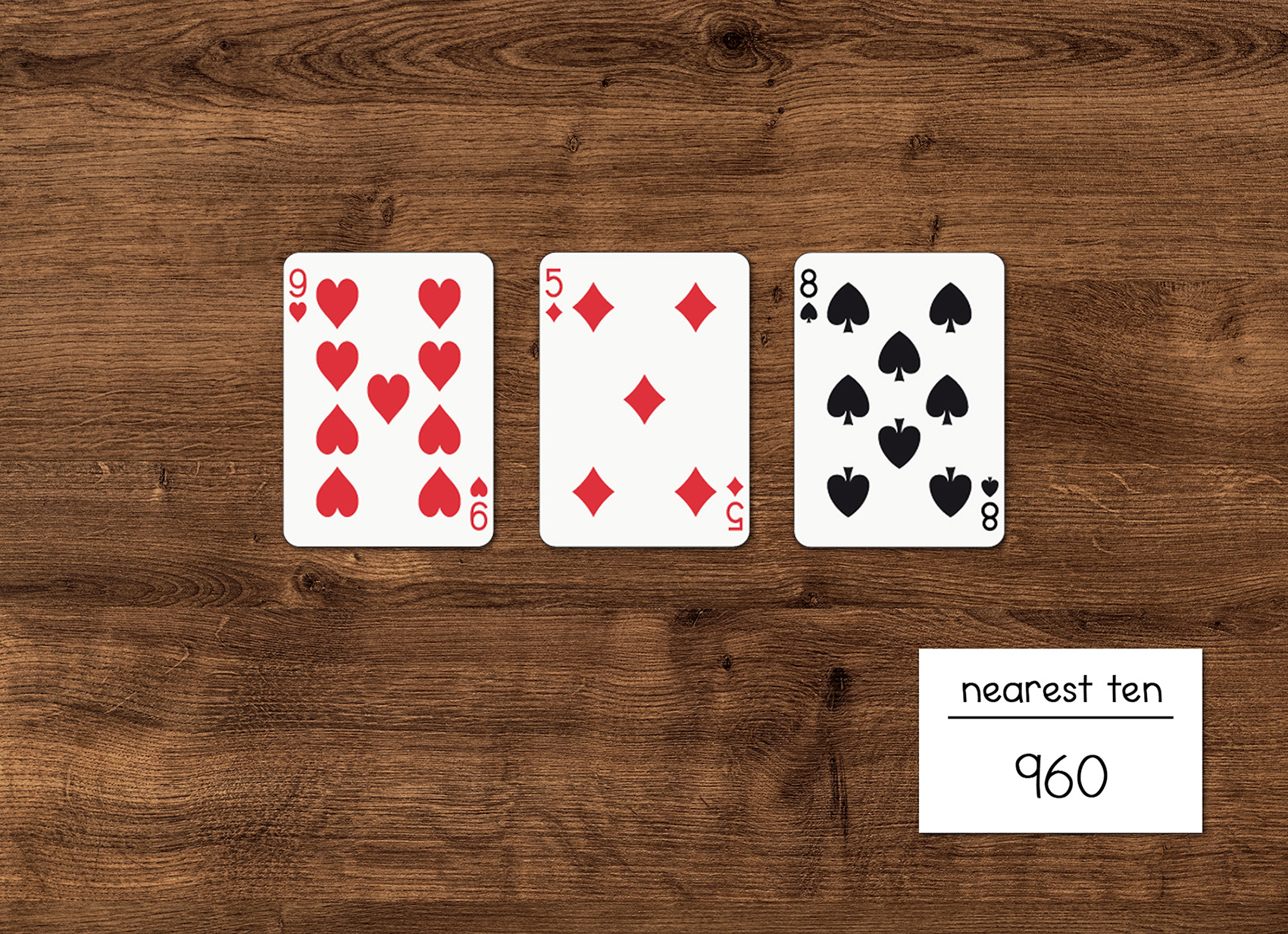
Here are a few ways you can make this rounding activity a success with your students:
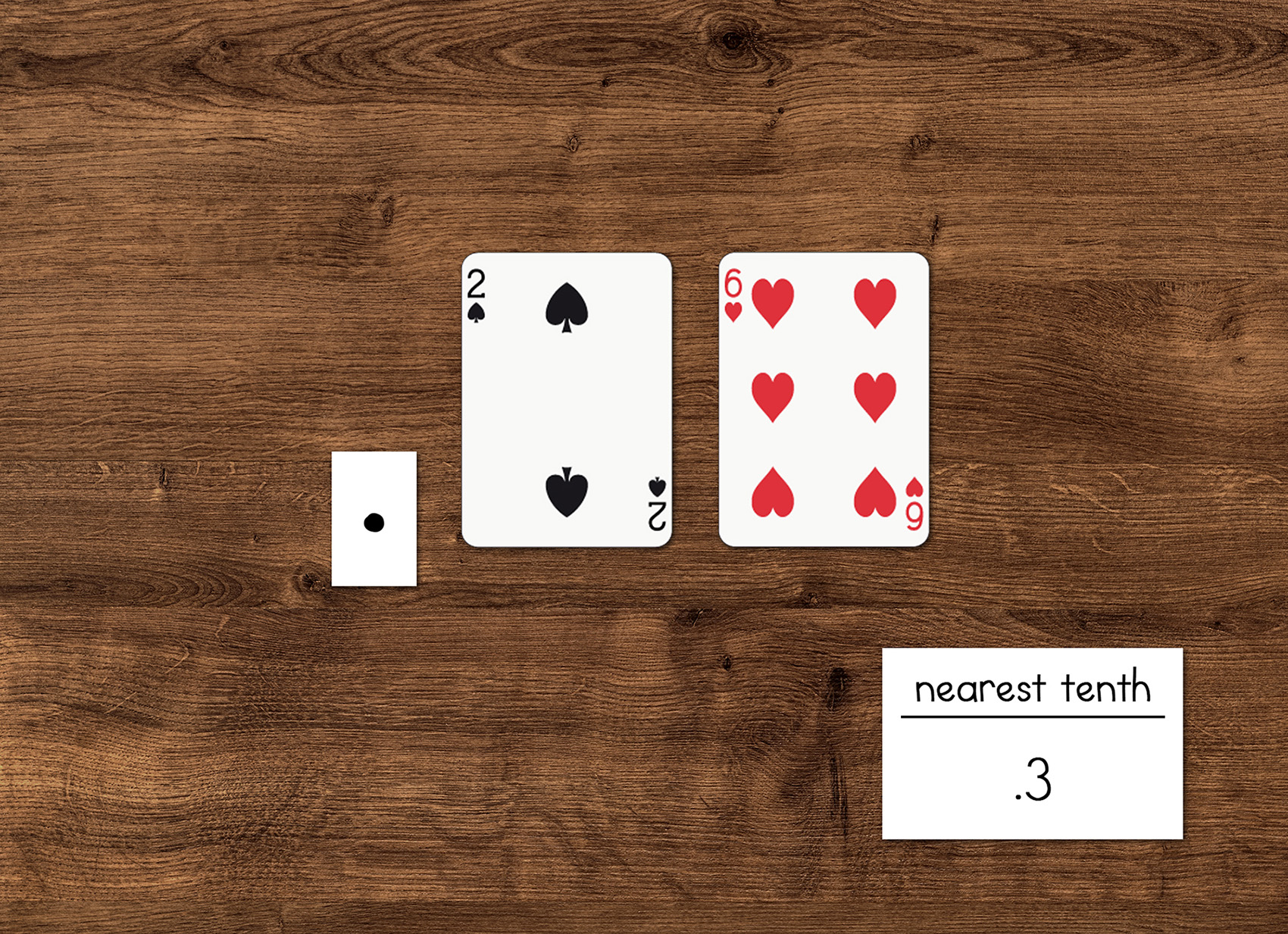
Playing cards are an easy and fun way to practice important math skills, like rounding. What are some other ways you like to use playing cards to practice math skills with your students? We would love to hear from you! Share your thoughts with our teaching community in the comment section below.
Be sure to tag @iknowitcom on social media so we can check out your rounding adventures!
Looking for more fun, interactive math activities to try with your elementary students? Browse iKnowIt.com for hundreds of engaging math activities to practice rounding, place value, and more with your little learners.